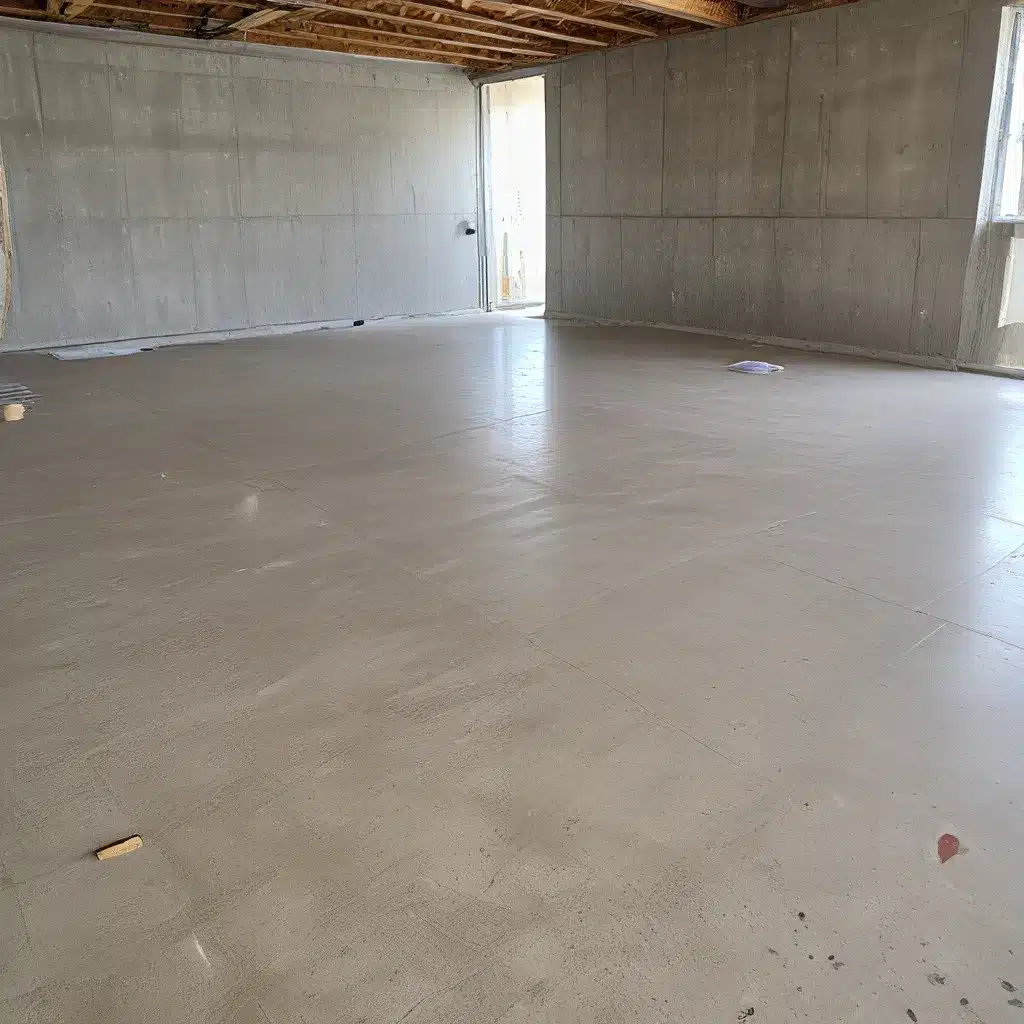
In the bustling city of Kansas City, where the rhythm of life is as constant as the beat of a drum, one crucial element often goes overlooked: the importance of concrete slab soundproofing. Whether you’re a homeowner seeking to create a haven of tranquility or a business owner aiming to provide a productive and comfortable environment, understanding the benefits of proper concrete slab insulation can be a game-changer.
Addressing the Noise Dilemma
Concrete slabs, often the foundation of modern construction, can inadvertently act as a conduit for sound, transmitting the reverberations of everyday activities from one level to the next. This can lead to a host of issues, from disrupted concentration and diminished productivity to a lack of privacy and, in some cases, even safety concerns.
The solution lies in the strategic implementation of sound-absorbing insulation materials. By strategically placing these materials within the concrete slab assembly, you can effectively minimize the transfer of noise and create a more tranquil environment. This not only enhances the overall comfort and well-being of occupants but also contributes to the long-term durability and value of the structure.
The Importance of Soundproofing for Concrete Slabs
Concrete slabs, while sturdy and reliable, can pose unique challenges when it comes to acoustics and noise control. Without proper soundproofing measures, the dense nature of concrete can amplify and transmit sounds, leading to a host of issues:
-
Disrupted Productivity: In commercial settings, such as office spaces or healthcare facilities, excessive noise can hinder concentration, reduce productivity, and negatively impact the overall work environment.
-
Compromised Privacy: In both residential and commercial settings, poor soundproofing can compromise the privacy of occupants, leading to a lack of personal space and the potential for conflicts.
-
Safety Concerns: In certain industries, such as manufacturing or healthcare, the ability to clearly hear safety-critical sounds, like alarms or emergency instructions, is paramount. Inadequate soundproofing can jeopardize these vital communication channels.
-
Reduced Energy Efficiency: Uncontrolled noise transfer can also impact the energy efficiency of a building, as the need for constant noise masking or acoustic insulation can increase energy consumption and costs.
Improving Concrete Slab Soundproofing
Addressing the challenge of concrete slab soundproofing requires a multifaceted approach that combines strategic product selection, expert installation, and a deep understanding of building science principles. Let’s explore some of the key strategies and techniques that can help enhance the soundproofing capabilities of concrete slabs in Kansas City:
Insulation Materials
One of the most effective ways to improve concrete slab soundproofing is through the use of specialized insulation materials. These materials, designed to absorb and dampen sound waves, can be strategically placed within the concrete slab assembly or suspended beneath it. Some popular options include:
-
Stone Wool Insulation: Known for its exceptional sound-absorbing properties, stone wool insulation can be installed within the concrete slab or as part of a suspended ceiling system to create a highly effective soundproofing solution.
-
Acoustic Foam: Lightweight and easy to install, acoustic foam can be used to line the underside of a concrete slab, providing an additional layer of sound-dampening protection.
-
Rubber Underlayment: Placed between the concrete slab and the finished flooring, rubber underlayment can help reduce impact noise and improve overall acoustics.
The selection of the right insulation material should be based on factors such as the specific noise sources, the desired level of sound attenuation, and the overall construction requirements of the project.
Suspended Ceiling Systems
Suspended ceiling systems can play a crucial role in enhancing the soundproofing capabilities of concrete slabs. By creating a gap between the slab and the finished ceiling, these systems allow for the installation of insulation materials that can effectively absorb and trap sound waves. This not only improves the acoustic performance of the space but also provides an opportunity to conceal mechanical systems and create a visually appealing aesthetic.
Structural Considerations
In addition to the selection of insulation materials and suspended ceiling systems, the overall structural design of the concrete slab can also impact its soundproofing capabilities. Factors such as slab thickness, reinforcement, and the use of damping materials can all contribute to the overall acoustic performance of the assembly.
By working closely with experienced concrete contractors and building science professionals, Kansas City-based homeowners and business owners can ensure that their concrete slab installations are designed and executed with optimal soundproofing in mind.
Achieving Soundproofing Excellence
Enhancing the soundproofing capabilities of concrete slabs in Kansas City is not just about improving the acoustic environment – it’s about creating spaces that foster productivity, well-being, and safety. By leveraging the right insulation materials, suspended ceiling systems, and structural considerations, you can transform your concrete slab into a haven of tranquility, where the only sounds that permeate are those you choose to embrace.
Concrete Contractor Kansas City is committed to delivering exceptional concrete services that prioritize both functionality and comfort. Our team of experts understands the unique challenges of concrete slab soundproofing in the Kansas City area and is dedicated to providing tailored solutions that meet the specific needs of our clients.
Whether you’re a homeowner seeking to create a peaceful oasis or a business owner aiming to optimize your workspace, we encourage you to explore the transformative power of concrete slab soundproofing. Contact us today to learn more about how we can help you achieve the perfect balance of strength, safety, and serenity in your concrete projects.

